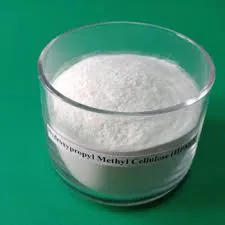
Oct . 07, 2024 05:16 Back to list
hpmc grades viscosity
Understanding HPMC Grades and Their Viscosity
Hydroxypropyl methylcellulose (HPMC) is a widely used polymer in various industries, particularly in pharmaceuticals, food, and construction. Its unique properties, including its ability to form gels, retain moisture, and act as a viscosity modifier, make it a crucial ingredient in numerous applications. One of the key aspects of HPMC is its varying grades, which are primarily differentiated by their viscosity levels.
Understanding HPMC Grades and Their Viscosity
In the pharmaceutical industry, HPMC is often utilized as a binder in tablet formulations, as well as for controlled-release applications. The viscosity of the chosen HPMC grade can significantly affect the release profile of active pharmaceutical ingredients (APIs). For instance, higher viscosity grades can create a barrier around the API, slowing its release and allowing for a more extended therapeutic effect. Thus, understanding the properties of different HPMC grades is crucial for pharmaceutical formulators aiming to achieve specific drug delivery goals.
hpmc grades viscosity

In the food industry, HPMC serves as a stabilizer, thickener, and emulsifier. It can improve texture and consistency in products such as sauces, dressings, and bakery goods. The viscosity of HPMC can also influence the sensory properties of food items, affecting mouthfeel and overall palatability. For example, a low-viscosity HPMC might be more suitable for a thin sauce, while a higher viscosity grade could be preferred for a creamy dressing.
In construction, HPMC is essential in manufacturing mortars, plasters, and tile adhesives. Its role as a water retention agent is vital, as it helps maintain workability and open time in construction materials. The viscosity of the HPMC used can directly impact the adhesion and consistency of the final product. For instance, a higher viscosity may improve the ability of tile adhesives to hold onto the tiles during application, ensuring durability.
In conclusion, the viscosity of HPMC grades plays a pivotal role across various sectors. By carefully selecting the appropriate grade, industries can optimize product performance, enhance user experience, and meet specific regulatory requirements. As demand grows for high-quality formulations, understanding the nuances of HPMC grades and their viscosity characteristics will remain integral in driving innovation and quality across applications.
-
The Widespread Application of Redispersible Powder in Construction and Building Materials
NewsMay.16,2025
-
The Widespread Application of Hpmc in the Detergent Industry
NewsMay.16,2025
-
The Main Applications of Hydroxyethyl Cellulose in Paints and Coatings
NewsMay.16,2025
-
Mortar Bonding Agent: the Key to Enhancing the Adhesion Between New and Old Mortar Layers and Between Mortar and Different Substrates
NewsMay.16,2025
-
HPMC: Application as a thickener and excipient
NewsMay.16,2025
-
Hec Cellulose Cellulose: Multi functional dispersants and high-efficiency thickeners
NewsMay.16,2025







